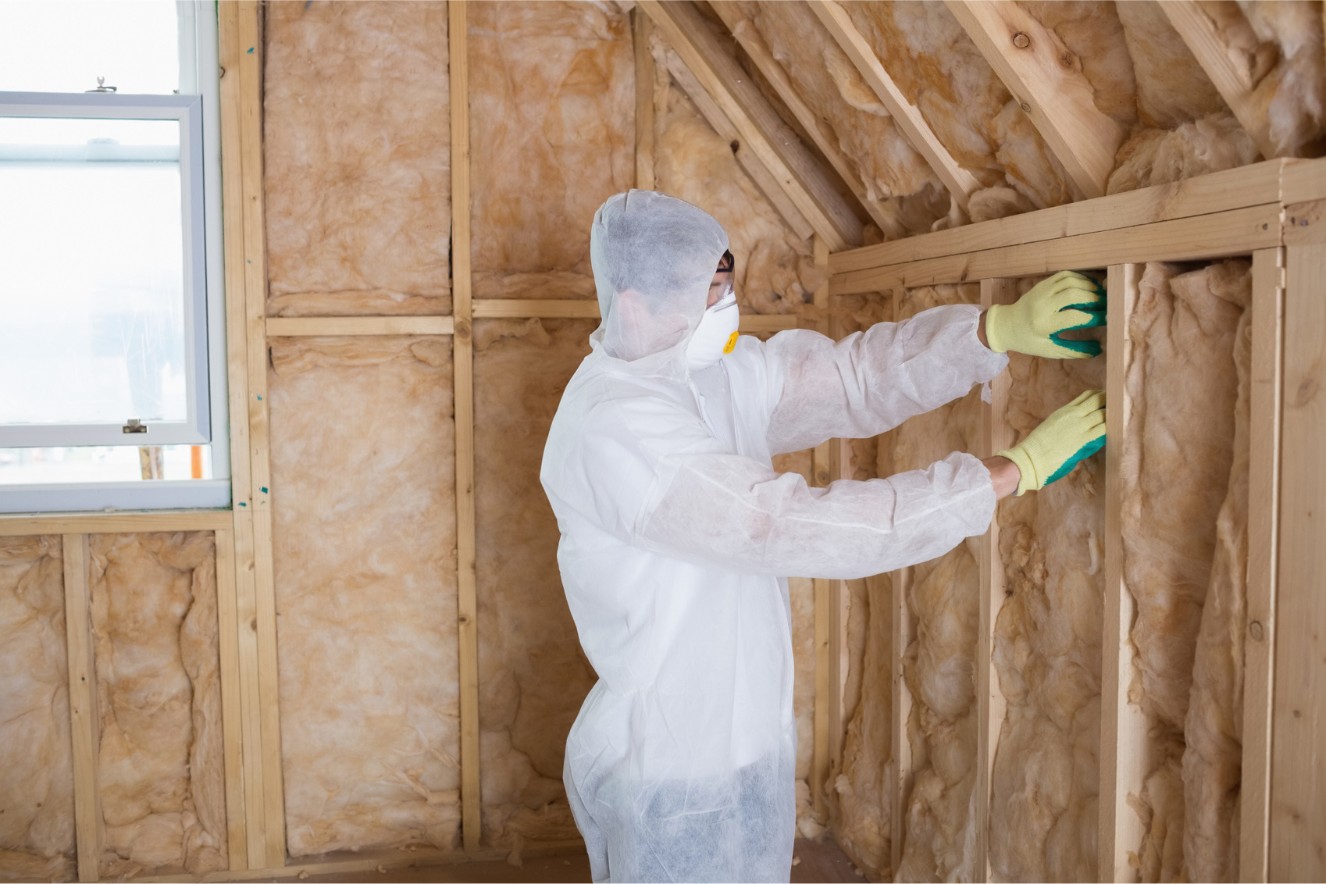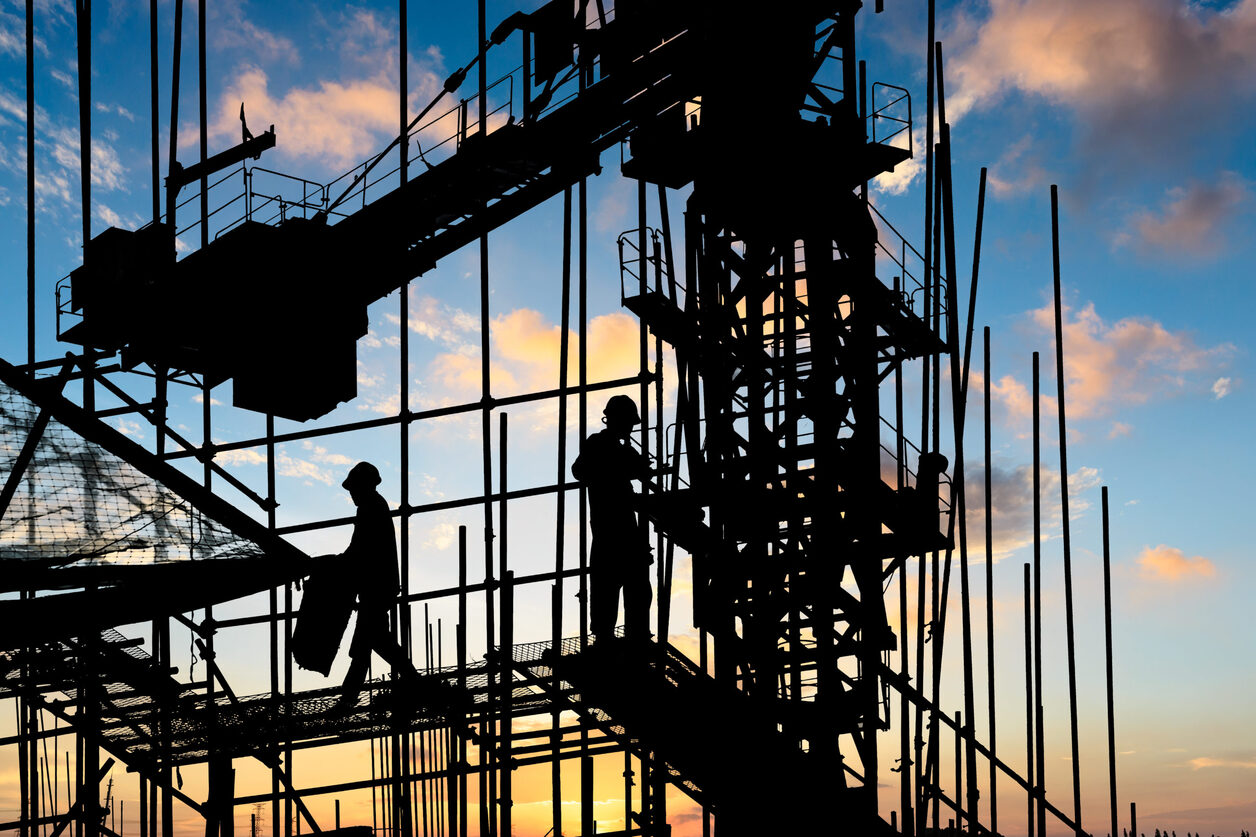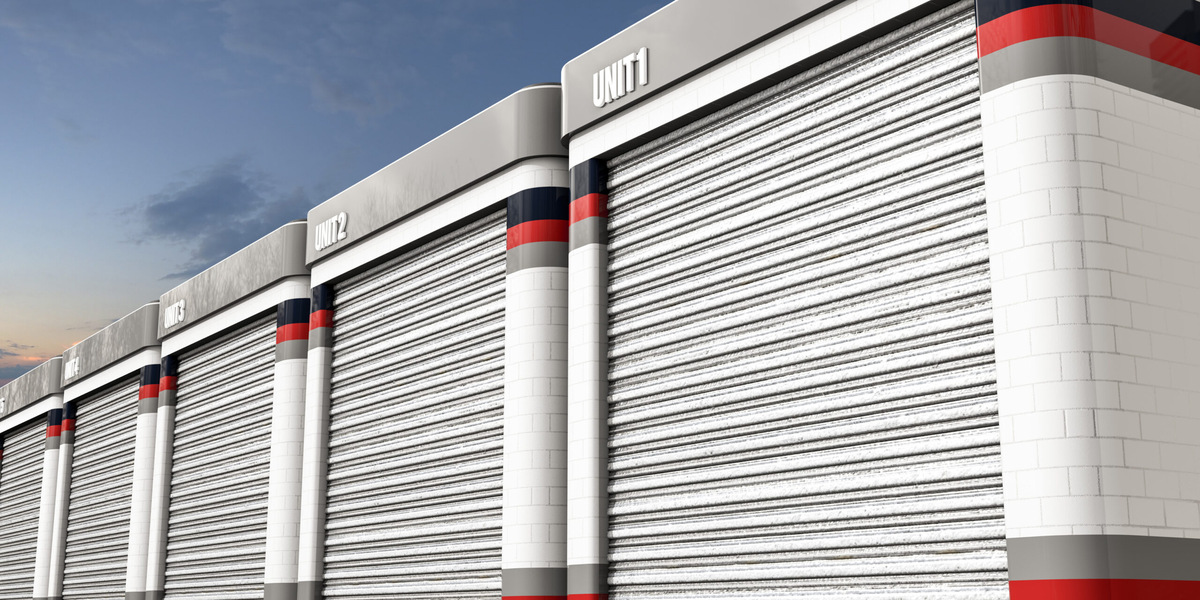Home>diy>Building & Construction>What Happens If You Speed In A Construction Zone


Building & Construction
What Happens If You Speed In A Construction Zone
Modified: December 7, 2023
Curious about speeding in a construction zone? Discover the consequences and risks of exceeding the speed limit in areas of building construction.
(Many of the links in this article redirect to a specific reviewed product. Your purchase of these products through affiliate links helps to generate commission for Storables.com, at no extra cost. Learn more)
Introduction
Welcome to the bustling world of construction! As you navigate through the city streets, you can’t help but notice the orange cones, flashing signs, and the symphony of hammering and drilling. Construction zones are a common sight as our urban landscapes continue to evolve and develop. These zones serve as a vital hub for building and infrastructure projects, but they also require special care and attention from drivers.
Driving through a construction zone can be a tricky affair. Not only do you need to be mindful of changes in road conditions, but you must also be aware of the reduced speed limits in place. Ignoring these speed limits can have serious consequences, both legally and for the safety of those working at the site. In this article, we will explore the legal consequences of speeding in a construction zone, the potential fines and penalties, and the impact it can have on your driver’s license and insurance.
But before we delve into the legal side of things, it is essential to understand the potential risks and hazards that construction workers face every day on the job. These brave individuals work diligently to improve our infrastructure and create safe and functional spaces for communities. Speeding through a construction zone not only endangers their lives but also increases the risk of accidents and injuries. It is our responsibility as drivers to prioritize their safety and contribute to a secure work environment.
So, fasten your seatbelts and get ready to explore the world of construction zones, fines, and safety. Together, we can create awareness and promote responsible driving habits in these areas. Let’s dive in!
Key Takeaways:
- Speeding in construction zones can lead to severe legal consequences, hefty fines, demerit points, and increased insurance premiums. It’s crucial to prioritize safety and adhere to posted speed limits to avoid these penalties.
- By obeying reduced speed limits in construction zones, drivers can protect the lives of construction workers, mitigate the risk of accidents, and contribute to a safer and more efficient flow of traffic. Safe driving habits are essential for the well-being of all individuals on the road.
Read more: How Fast Can You Go In A Construction Zone
Legal Consequences of Speeding in a Construction Zone
When you drive through a construction zone, it’s crucial to remember that the reduced speed limits are not just suggestions; they are legally enforced. Speeding in a construction zone can result in severe legal consequences, as authorities take these violations very seriously. Let’s explore some of the potential penalties you could face if you choose to ignore the posted speed limits.
First and foremost, speeding fines in construction zones are typically higher than regular speeding fines. This is due to the increased risk involved and the need to deter drivers from endangering construction workers and other motorists. The exact fines can vary depending on your location and the specific circumstances of the offense, but they can often be several times higher than regular speeding fines.
In addition to the fines, speeding in a construction zone can also result in the accumulation of demerit points on your driving record. Demerit points are used by traffic authorities to track and penalize unsafe driving behavior. The number of points assigned for a speeding offense can vary depending on the severity of the violation and local regulations. Accumulating too many demerit points can lead to the suspension or revocation of your driver’s license.
Furthermore, speeding in a construction zone can have a significant impact on your car insurance premiums. Insurance providers consider traffic violations, including speeding, when determining your risk profile as a driver. Higher risk can result in increased insurance rates or even the cancellation of your policy. It’s important to note that insurance companies have access to your driving record, which includes any construction zone speeding convictions.
Lastly, it’s worth mentioning that some jurisdictions may also impose additional penalties for speeding in a construction zone. This could include mandatory traffic school or even community service. These measures are aimed at educating drivers about the risks involved and promoting safer driving habits.
Now that we have explored the legal consequences of speeding in a construction zone, it’s essential to understand the potential impact on your driver’s license and insurance. In the next section, we will delve deeper into these topics and explore how speeding in a construction zone can affect you on a personal level.
Potential Fines and Penalties
Speeding in a construction zone can result in hefty fines and penalties. The exact amount you may be fined varies depending on the jurisdiction and the severity of the offense. However, it is important to note that fines for speeding in construction zones are typically higher than regular speeding fines. Let’s take a closer look at some potential fines and penalties you could face for this violation.
In many places, the fines for speeding in a construction zone can range from $250 to $1,000 or more. These fines are often significantly higher than those for speeding in regular zones as they aim to deter drivers from endangering the safety of construction workers and other motorists. It is crucial to remember that these fines can add up quickly, especially if you are a repeat offender.
In addition to the financial impact, speeding in a construction zone can also lead to the accumulation of demerit points on your driving record. Demerit points are assigned to drivers who commit traffic violations, and they serve as a way for authorities to monitor and penalize unsafe driving behavior. The number of demerit points you receive for speeding in a construction zone depends on the jurisdiction and the specific circumstances of the offense.
Accumulating too many demerit points can have serious consequences for your driver’s license. Depending on the jurisdiction, reaching a certain threshold of demerit points can result in a temporary suspension of your license. Continued violations and the accumulation of more demerit points may even lead to the revocation of your license, requiring you to go through a lengthy process to have it reinstated.
Furthermore, it’s important to consider the impact of speeding in a construction zone on your car insurance premiums. Insurance providers assess your risk as a driver based on your driving record, and traffic violations like speeding can increase that risk. As a result, your insurance rates may go up significantly, or your policy may even be canceled or non-renewed. It is necessary to understand that insurance companies have access to your driving record, including any convictions for speeding in a construction zone.
Lastly, some jurisdictions may impose additional penalties for speeding in construction zones. This can include mandatory attendance at defensive driving courses or community service. These measures are designed to educate drivers about the risks associated with speeding in construction zones and promote safer driving habits.
It’s important to be aware of the potential fines and penalties associated with speeding in a construction zone. By obeying the posted speed limits and exercising caution, you can avoid the financial burden and other consequences of this violation. In the next section, we will explore the impact of construction zone speeding on your driver’s license and insurance.
Impact on Driver’s License and Insurance
Speeding in a construction zone can have a significant impact on your driver’s license and car insurance. Not only can it result in the accumulation of demerit points, but it can also lead to increased insurance premiums or even the cancellation of your policy. Let’s explore the potential consequences in more detail.
One of the first repercussions of speeding in a construction zone is the accumulation of demerit points on your driver’s license. Demerit points are assigned to drivers who commit traffic violations, and they serve as a way for authorities to monitor unsafe driving behavior. The number of demerit points received for speeding in a construction zone varies depending on jurisdiction and the severity of the offense.
If you accumulate too many demerit points within a certain period, your driver’s license may be temporarily suspended. The length of the suspension varies depending on local laws and regulations. During this period, you’ll be unable to legally drive, and getting your license reinstated will require fulfilling certain requirements such as taking a defensive driving course or paying additional fees.
In addition to the impact on your driver’s license, speeding in a construction zone can also have consequences for your car insurance. Insurance providers take into account your driving record when determining your risk profile as a driver. Traffic violations, including speeding in a construction zone, can increase your perceived risk, resulting in higher insurance premiums.
In some cases, insurers may choose to raise your premiums after a single speeding conviction in a construction zone. If you have multiple violations or a pattern of unsafe driving behavior, your insurer may even decide to cancel your policy or refuse to renew it. This can make it more challenging to find affordable insurance coverage in the future.
It’s also important to note that insurance companies have access to your driving record, which includes any convictions for speeding in a construction zone. Even if you switch insurance providers, they can still access this information, and it may impact the rates they offer you. It’s crucial to maintain a clean driving record and drive responsibly to avoid negative consequences for your insurance coverage.
By obeying the speed limits in construction zones and driving responsibly, you can protect your driver’s license and avoid the potential negative impact on your car insurance. It’s essential to prioritize safety and be mindful of the potential consequences when tempted to exceed the speed limit in these areas. In the next sections, we will explore the safety risks to construction workers and the increased risk of accidents and injuries in construction zones.
Safety Risks to Construction Workers
Construction workers play a vital role in building and improving our infrastructure, but their job comes with inherent risks. Speeding in a construction zone can significantly increase these risks, posing a threat to the safety and well-being of these brave individuals. Let’s delve deeper into the potential safety risks that construction workers face when drivers choose to ignore the posted speed limits.
One of the primary risks that construction workers face when drivers speed in a construction zone is the increased chance of being struck by a vehicle. Construction zones are dynamic environments with changing road conditions, temporary barriers, and limited visibility. Workers rely on drivers to adhere to the reduced speed limits and follow traffic control measures to maintain a safe working area. When drivers exceed the speed limits, they reduce their reaction time and have less control over their vehicles, increasing the likelihood of accidents and collisions with workers.
Speeding cars also create air turbulence that can be hazardous in construction zones. Construction workers often deal with delicate equipment, loose debris, or materials that can be easily blown away by the wind created by fast-moving vehicles. This can pose a risk not only to the workers themselves but also to the safety of pedestrians and other motorists in the vicinity.
In addition to the physical risks, speeding in a construction zone can also create an environment of anxiety and stress for construction workers. Imagine working on a road repair project with cars whizzing by at high speeds just a few feet away. This constant threat can take a toll on the mental well-being of workers and make it more challenging for them to focus on their tasks. An increase in stress levels can lead to decreased productivity and higher chances of on-site accidents or errors.
It is crucial for drivers to recognize the importance of maintaining a safe speed in construction zones to protect the lives and well-being of these dedicated individuals. By adhering to the posted speed limits, we can create a safer working environment for construction workers, ensuring that they can perform their jobs without unnecessary risks or distractions.
In the next section, we will explore the increased risk of accidents and injuries that come with speeding in a construction zone and the importance of responsible driving in these areas.
Always obey the posted speed limit in a construction zone. Speeding can result in hefty fines, increased risk of accidents, and harm to construction workers. Stay alert and drive cautiously.
Read more: How Fast Do You Go In A Construction Zone
Increased Risk of Accidents and Injuries
Speeding in a construction zone not only endangers the lives of construction workers but also increases the risk of accidents and injuries for all individuals in the vicinity. When drivers choose to ignore the reduced speed limits, they create a dangerous environment that can lead to devastating consequences. Let’s delve into the potential risks associated with speeding in a construction zone and the importance of responsible driving in these areas.
One of the primary reasons why speeding in a construction zone is so dangerous is the limited space available for both workers and motorists. Construction zones often have temporary lane shifts, narrowed lanes, or obstructions that require drivers to navigate through a confined space. When drivers exceed the speed limits, they have less time and space to react to changing road conditions, increasing the likelihood of collisions with construction equipment, barriers, or other vehicles.
Furthermore, construction zones often entail uneven road surfaces, loose debris, or unexpected hazards that require drivers to exercise caution. Speeding through these areas can lead to loss of control, especially if a driver encounters a pothole, gravel, or other obstacles. This loss of control not only poses a risk to the speeding driver but also to construction workers and other road users who may be caught in the ensuing accident.
Speeding also reduces the driver’s ability to stop abruptly. Construction zones typically have a higher density of workers and pedestrians, who may need to cross the road or move equipment in close proximity to traffic. When drivers exceed the speed limits, they may not have enough time to react and stop safely, leading to potentially catastrophic accidents and injuries.
In addition to the risks posed to individuals in the proximity of the construction zone, speeding also contributes to a higher likelihood of rear-end collisions. When drivers are speeding, they have less time to react to other vehicles slowing down or coming to a stop. This increased risk of rear-end collisions can cause a chain reaction of accidents and injuries, putting everyone on the road at risk.
Responsible driving in construction zones is of utmost importance to ensure the safety of all individuals involved. By obeying the reduced speed limits, drivers can reduce the risk of accidents and injuries and protect the well-being of construction workers, other motorists, and pedestrians.
In the next section, we will discuss the significance of adhering to construction zone speed limits and provide some essential tips for safe driving in these areas.
Importance of Adhering to Construction Zone Speed Limits
Adhering to the posted speed limits in construction zones is of utmost importance for the safety of both construction workers and drivers. These reduced speed limits are put in place to create a safer environment and mitigate the risks associated with construction activities. Let’s explore the significance of adhering to construction zone speed limits and why it is essential for all individuals on the road.
First and foremost, obeying construction zone speed limits helps protect the lives of construction workers. These dedicated individuals work tirelessly to improve our infrastructure and create a better environment for everyone. By driving at a safe and reduced speed, you minimize the risk of colliding with workers and ensure their well-being. Remember, construction sites are dynamic and often have multiple hazards that require workers to be alert and focused. Speeding through a construction zone puts these workers at significant risk and can lead to devastating consequences.
Adhering to construction zone speed limits also promotes a safer environment for all individuals in the vicinity. Construction zones may have temporary barriers, narrowed lanes, or lane shifts that require careful navigation. By driving within the posted speed limits, you allow for better lane changes, reduce the risk of sideswiping other vehicles, and maintain a safe distance from construction equipment and workers.
Another crucial reason to follow construction zone speed limits is to mitigate the risk of accidents. Speeding reduces the driver’s ability to react to unexpected situations and increases the likelihood of collisions. Construction zones often have uneven road surfaces, loose debris, or sudden changes in traffic flow that require drivers to be extra cautious. By driving at a reduced speed, you have more control over your vehicle and can react quickly to any potential hazards, preventing accidents and injuries.
It’s important to understand that construction zones are not only dangerous for workers but also for drivers who choose to speed. Collisions in construction zones can have severe consequences, leading to property damage, injuries, and even fatalities. By adhering to the posted speed limits, you not only protect the lives of those around you but also safeguard your own well-being.
Lastly, by driving responsibly in construction zones, you contribute to a safer and more efficient flow of traffic. Speeding can disrupt the traffic pattern, cause congestion, and impede the progress of construction projects. By reducing your speed and following the designated traffic control measures, you help create a smoother traffic flow and reduce the frustrations of fellow drivers.
Remember, the reduced speed limits in construction zones are put in place to preserve the safety of everyone involved. By obeying these limits, you play an active role in creating a secure environment for construction workers, drivers, and pedestrians alike.
In the next section, we will provide some essential tips for safe driving in construction zones to ensure the well-being of all individuals on the road.
Tips for Safe Driving in Construction Zones
Driving through construction zones requires extra caution and attention to ensure the safety of construction workers, other motorists, and yourself. Here are some essential tips to help you navigate construction zones safely:
- Obey the posted speed limits: Always adhere to the reduced speed limits in construction zones. Slow down and adjust your speed according to the signage and instructions provided.
- Stay alert and focused: Pay close attention to the road and the surrounding environment. Avoid distractions such as cell phones or loud music that can take your attention away from the construction site.
- Follow traffic control measures: Respect traffic signals, lane closures, and detour signs. These measures are put in place to guide you safely through the construction zone.
- Maintain a safe distance: Keep a safe following distance between your vehicle and the vehicle ahead of you. This will give you ample time to react to sudden stops or changes in traffic flow.
- Be patient and courteous: Construction zones may cause traffic delays or disruptions. Stay calm, be patient, and practice courtesy towards other drivers and construction workers.
- Watch for workers and equipment: Keep an eye out for construction workers, their equipment, and any signs warning of their presence. Be prepared to yield or stop when necessary.
- Avoid sudden lane changes: Stick to your lane and avoid unnecessary lane changes in construction zones. Sudden lane changes can create confusion and increase the risk of accidents.
- Be mindful of road conditions: Construction zones may have uneven road surfaces, loose gravel, or unexpected obstacles. Adjust your driving accordingly and be prepared for changes in road conditions.
- Observe speed transitions: Pay attention to speed limit changes as you approach and exit construction zones. Gradually adjust your speed to the new limits for a smooth transition.
- Stay informed: Stay updated with any road work or construction projects in your area. Check for road closure or alternate route information before your journey to avoid unexpected detours or delays.
By following these tips, you can contribute to a safer driving experience in construction zones. Remember, the well-being of construction workers and the safety of all individuals on the road depend on responsible and cautious driving.
As we wrap up, let’s reflect on the importance of adhering to construction zone speed limits and maintaining a vigilant mindset when driving through these areas. By doing so, we can promote a culture of safety and ensure everyone’s well-being.
Conclusion
Driving through construction zones requires attention, caution, and a sense of responsibility. The reduced speed limits in these areas are not arbitrary; they are in place to safeguard the lives of construction workers, protect the well-being of drivers, and create a safer environment for all individuals on the road.
By speeding in construction zones, you not only risk severe legal consequences and potential fines but, more importantly, you jeopardize the safety of construction workers and increase the likelihood of accidents and injuries. It is crucial to recognize and respect the significant risks associated with speeding in these areas.
Construction workers play a critical role in building and improving our infrastructure. Their safety should never be compromised by reckless driving. Adhering to the posted speed limits is the least we can do to show our appreciation for their hard work and dedication.
Moreover, responsible driving in construction zones is essential for maintaining a smooth flow of traffic and minimizing congestion. By obeying the reduced speed limits, following posted signs, and being vigilant of construction workers and equipment, we ensure a safer and more efficient travel through these areas.
Remember, construction zones are dynamic environments with changing road conditions, temporary barriers, and limited visibility. Speeding through these zones endangers the lives of those working on-site, as well as your own well-being and that of other road users.
Let’s prioritize safety and responsible driving habits in construction zones. Slow down, stay alert, and be mindful of the potential risks and challenges that these areas pose. By doing so, we can help create a secure working environment for construction workers and ensure a safer journey for everyone.
Together, let’s make a difference and promote a culture of respect, responsibility, and safety in construction zones. By adhering to the speed limits and driving with caution, we can contribute to the well-being of construction workers and create a better and safer future for all.
Frequently Asked Questions about What Happens If You Speed In A Construction Zone
Was this page helpful?
At Storables.com, we guarantee accurate and reliable information. Our content, validated by Expert Board Contributors, is crafted following stringent Editorial Policies. We're committed to providing you with well-researched, expert-backed insights for all your informational needs.















0 thoughts on “What Happens If You Speed In A Construction Zone”